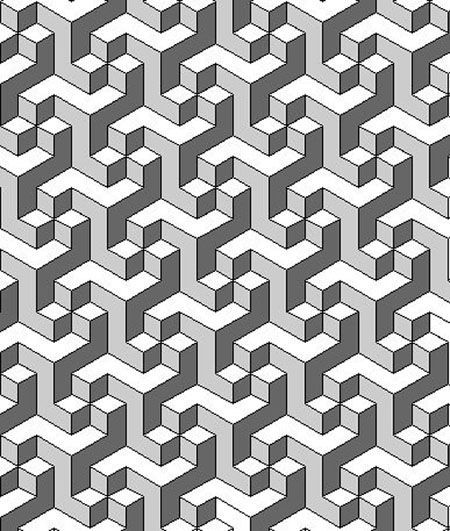Visual Art: Pattern

×
![]()
Read and underline all the important or new information on page 19-20 in your Visual Arts file.
Colour the tessellation on page 19.
Look at the examples of tessellations. There is a strong element of mathematics involved in tessellating a shape. Polygons, like triangles, squares, rectangles and hexagons, are easier to tessellate, while circles and organic shapes are not.
Create a tessellation by colouring the triangles or squares on page 20.
Use two colours and alternate them vertically and horizontally - as shown in the examples.
In Tangrams (p 16-18) you created new shapes and pictures by adding together basic polygons. In overlapping (p 42) you created new shapes by removing parts of a shape. By looking at the positive and negative space of an image (p 39-40) you have seen that a picture is not just what we see, but also what we do not consciously look at.
Now you are ready to explore the hidden magic of all three by creating a picture tessellation.
To do this one has to start with a small paper polygon (3 cm).
Cut away part of the shape and attach it on the opposite side to form a new polygon. In the examples this has been demonstrated using the same technique on a rectangular, as well as, a square piece of paper.
Trace around the shape, flipping or rotating it so that the same shape is repeated over and over.
Fill up the frame on page 20 without leaving gaps or spaces.
Now colour in alternate shapes in two colours and add the detail which makes this a picture.
Due date: 19/20 September 2023